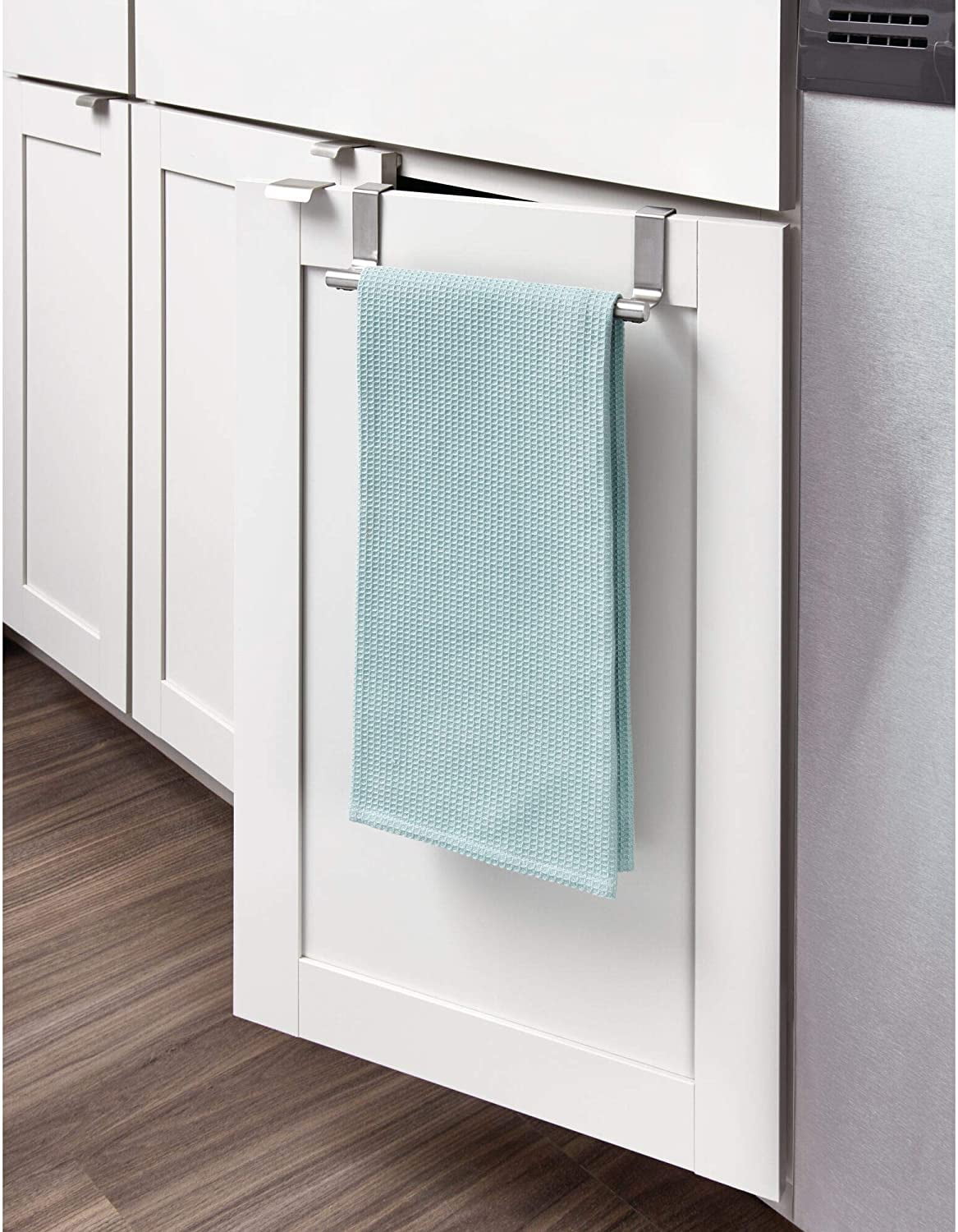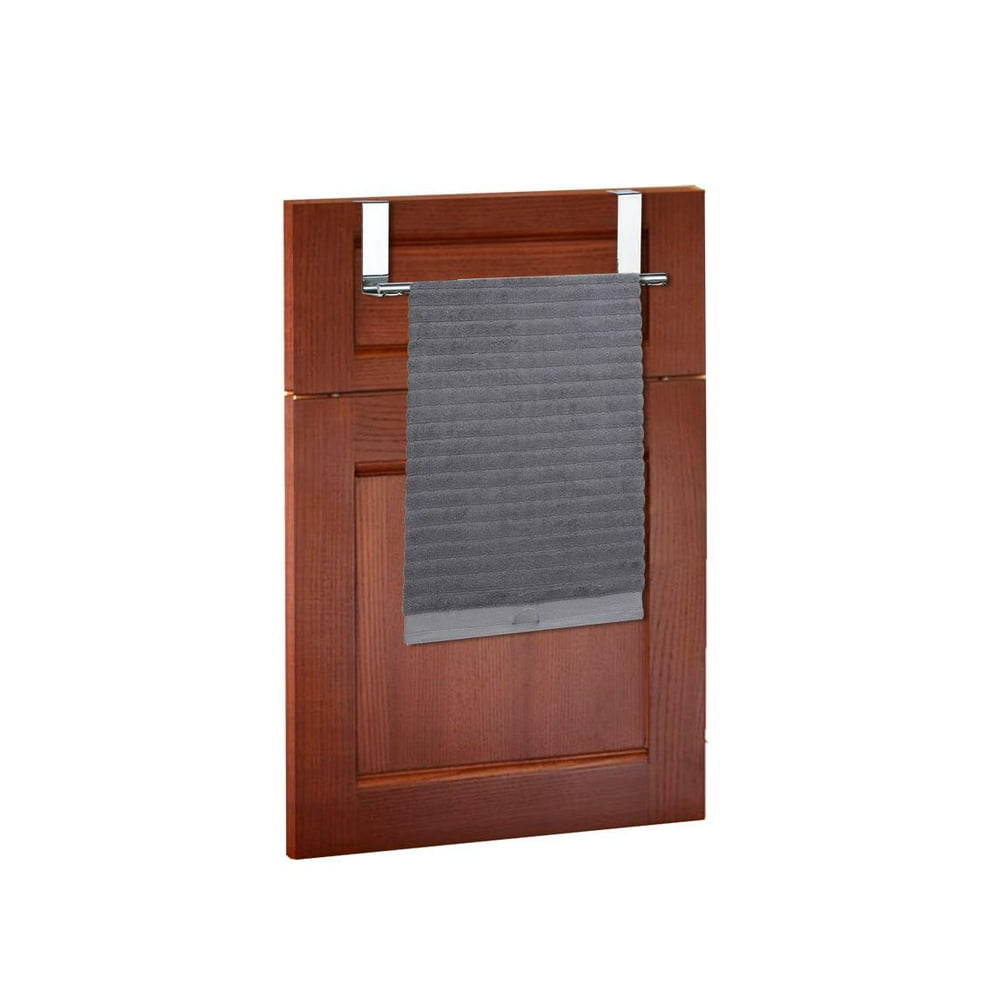The Versatility of Kitchen Cabinet Towel Rails
Kitchen cabinet towel rails are simple yet incredibly useful additions to any kitchen space. They provide convenient storage solutions for hand towels, dish towels, and even oven mitts, keeping them within easy reach while cooking or cleaning. In this comprehensive guide, we’ll explore the various benefits of kitchen cabinet towel rails, the different types available, installation methods, and creative ways to maximize their functionality in your kitchen.

Benefits of Kitchen Cabinet Towel Rails
Kitchen cabinet towel rails offer several benefits that make them indispensable in any kitchen:
Space-saving: By mounting towel rails inside cabinet doors or on the sides of cabinets, you can free up valuable countertop and drawer space. This is especially beneficial in smaller kitchens where every inch of space counts.
Easy access: Placing towels on cabinet rails ensures they’re always within reach when you need them, whether you’re drying hands, wiping spills, or handling hot pots and pans. This convenience can streamline your kitchen workflow and reduce the need to search for towels in drawers or on countertops.
Organized storage: Keeping towels on rails helps maintain a tidy and organized kitchen environment. Instead of cluttering up surfaces, towels are neatly hung in designated spaces, making it easier to locate them when needed.
Aesthetic appeal: Many kitchen cabinet towel rails feature sleek designs and finishes that complement the overall aesthetic of your kitchen. Whether you prefer modern stainless steel rails or rustic wooden ones, there are options to suit every style preference.

Types of Kitchen Cabinet Towel Rails
When it comes to kitchen cabinet towel rails, there are several types to choose from, including:
Over-the-door rails: These rails attach to the top of cabinet doors, allowing towels to hang down on the inside of the door. They’re ideal for cabinets located near sinks or cooking areas, providing quick access to towels while keeping them out of sight when not in use.
Under-cabinet rails: These rails are mounted on the underside of cabinets, typically near the sink or stove. They’re perfect for hanging hand towels or dishcloths within arm’s reach while working at the sink or cooking on the stovetop.
Side-mounted rails: Side-mounted rails are installed on the sides of cabinets, offering additional storage space for towels without taking up any cabinet or countertop space. They’re great for storing larger towels or oven mitts and can add a decorative touch to your kitchen cabinets.
Pull-out rails: Pull-out towel rails are installed inside cabinet drawers, allowing you to discreetly store towels out of sight. When needed, simply pull out the rail to access the towels, keeping them neatly organized and concealed when not in use.

Installation Methods
Installing kitchen cabinet towel rails is a straightforward process that can be completed in just a few simple steps:
Measure the space: Before purchasing towel rails, measure the area where you plan to install them to ensure they fit properly. Take into account the width and height of the cabinet doors or sides where the rails will be mounted.
Choose the mounting method: Depending on the type of rails you’ve selected, determine the best mounting method. For over-the-door rails, simply attach them to the top of the cabinet door using screws or adhesive strips. For under-cabinet or side-mounted rails, use screws to secure them in place.
Install the rails: Once you’ve chosen the mounting method, use a drill and screws to attach the rails to the cabinet doors or sides. Make sure the rails are level and securely fastened to prevent them from coming loose over time.
Stability test: After installing the rails, test them to ensure they can support the weight of towels without sagging or coming loose. Make any necessary adjustments to ensure they’re stable and secure.

Creative Uses for Kitchen Cabinet Towel Rails
In addition to their primary function of holding towels, kitchen cabinet towel rails can be used in creative ways to enhance your kitchen’s functionality:
Utensil storage: Mount rails on the sides of cabinets to hang cooking utensils such as spatulas, ladles, and tongs. This keeps them within easy reach while cooking and frees up drawer space for other items.
Pot lid organizer: Use towel rails to create a makeshift pot lid organizer by hanging lids on the rails. This prevents lids from cluttering up cabinet shelves and makes it easier to find the right lid when cooking.
Apron hanger: Hang aprons on cabinet towel rails to keep them off the floor and neatly organized. This ensures your aprons are always ready to grab when you need them and adds a decorative touch to your kitchen cabinets.
Recipe holder: Attach a rail to the inside of a cabinet door and use it to hold recipe cards or printed recipes while cooking. This keeps your recipes off the counter and away from spills and splatters, making them easier to read and follow.

Common Mistakes to Avoid
Ignoring weight capacity: Be mindful of the weight capacity of the towel rails and avoid overloading them with heavy towels or other items. This can cause the rails to bend or come loose from the cabinet, compromising their stability.
Improper installation: Ensure the towel rails are securely fastened to the cabinet doors or sides to prevent them from coming loose over time. Use the appropriate mounting hardware and follow the manufacturer’s instructions for installation.
Choosing the wrong size: Measure the space where you plan to install the towel rails and choose the ones that fit properly. Oversized rails may not fit within the allotted space, while undersized ones may not provide enough storage capacity.
Neglecting maintenance: Regularly clean and maintain the towel rails to prevent dust, dirt, and grime buildup. Wipe them down with a damp cloth or mild cleaner as needed to keep them looking new and functioning properly.

Can I install kitchen cabinet towel rails on any type of cabinet?
Yes, most kitchen cabinet towel rails are designed to be compatible with a variety of cabinet styles and materials. However, it’s important to choose rails that are suitable for the specific type of cabinet you have, such as wood, laminate, or metal.
How do I clean and maintain kitchen cabinet towel rails?
To clean towel rails, simply wipe them down with a damp cloth or mild cleaner to remove dust, dirt, and grime. Avoid using abrasive cleaners or harsh chemicals, as these can damage the finish of the rails.
Can I use kitchen cabinet towel rails to hang wet towels?
While kitchen cabinet towel rails are designed to hold towels, it’s best to avoid hanging wet towels on them for extended periods. Excess moisture can cause the rails to rust or corrode over time, leading to damage and deterioration.
Are there any safety concerns associated with kitchen cabinet towel rails?
When installing towel rails, be sure to secure them properly to prevent them from coming loose and causing injury. Avoid placing heavy items on the rails that exceed their weight capacity, as this can compromise their stability and pose a safety hazard.
Can I paint kitchen cabinet towel rails to match my kitchen decor?
Yes, many kitchen cabinet towel rails can be painted or refinished to match your kitchen decor. Choose a paint or finish that is suitable for the material of the rails and follow the manufacturer’s instructions for painting and drying.

Peka Snello Pull out & Towel Rail Storage Set SN150.TR.AN Anthracite

Kitchen Towel Rails Andrew Nebbett Designs

Home Basics Over The Cabinet Towel Rail – 9 Inch – Chrome

Kitchen Towel Storage Ideas

Clever Kitchen Towel Storage Ideas

Towel bar on kitchen island Kitchen Pinterest Stove, On the side and Organized kitchen

Related Posts:
- Extra Storage Cabinet For Kitchen
- White Kitchen Cabinets And Granite Countertops
- Grey Wood Grain Kitchen Cabinets
- Autocad Kitchen Cabinets
- Kitchen Cabinets Niagara Falls
- Kitchen Cabinet Accessories Prices
- Brown Kitchen Cabinets White Countertops
- Match Existing Kitchen Cabinet Doors
- Multiwood Kitchen Cabinets
- Plain Front Kitchen Cabinets